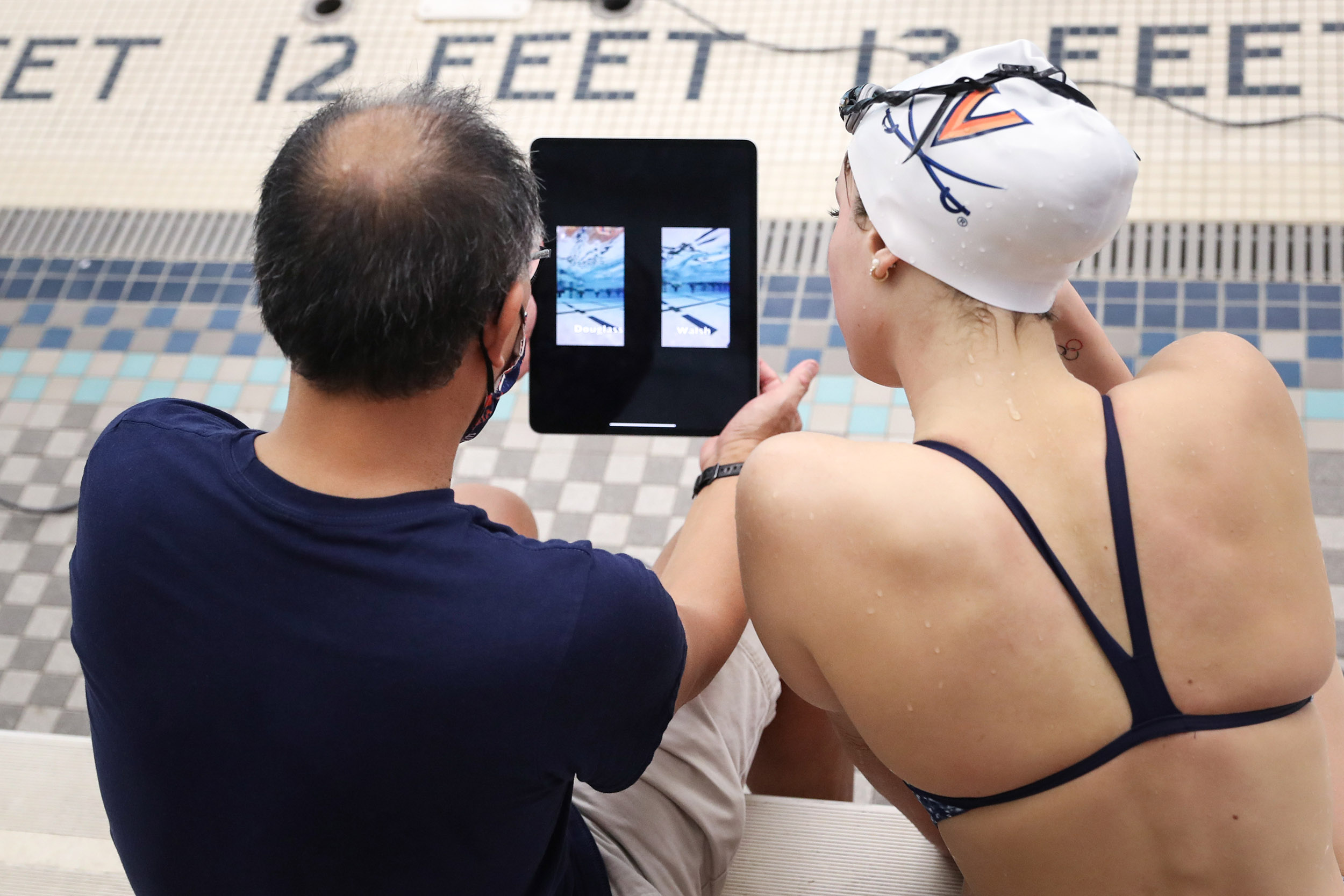Two of his students there were swimmers: Andrew Wilson, a walk-on with Emory’s championship team who wanted to become a faster swimmer; and Maddie Locus, a Ph.D. student who had already won a gold medal at the World University Games.
“What are the odds that two future U.S. National Team members would end up in my classes at Emory? But that’s what happened,” Ono said.
At the time, Ono’s son was also swimming in high school and hoped to become a collegiate swimmer. It was that series of connections that led Ono to begin applying the scientific method to the challenge of making swimmers faster.
“To make a long story short,” Ono said. “Andrew got really fast.”
When Wilson won a gold medal in the Tokyo Olympics in the men’s 4x100-meter medley relay, “people began to hear about what we were doing,” Ono said. “The success began to speak for itself, and we were invited by elite-level coaches around the country to reproduce what we had done with Andrew.”
Making the Numbers Matter
Ono joined the faculty at UVA in 2019, and by then, he had already developed several of the tests he needed to understand how to help swimmers gain valuable time in the water. Using a variety of sensors and a series of underwater cameras, Ono captures information about how swimmers move in the water and how they execute turns at the wall and about factors that are much more difficult to see, like how their bodies create unwanted drag and resistance and how they’re expending energy unnecessarily.
After a session with an athlete, Ono graphs the swimmer’s acceleration and the g-forces acting against them and compares it to the efforts of some of the many world-class and Olympic athletes he’s worked with to identify opportunities for improvement and optimization. The tweaks could be as simple as changing how deeply a swimmer dives into the pool, the way they anticipate a turn or just the way they hold their head in the water – adjustments that seem inconsequential, but could mean the difference between winning an Olympic medal and finishing off the medal stand.
“The secret weapon,” Ono says, “is that I’m studying these streams of acceleration data to identify which of the things that you can spot are the important ones.”
UVA coach Todd DeSorbo was still new to the UVA swim team when Russell Mark, a UVA alumnus and a high-performance manager with USA Swimming, the governing body that selects and trains U.S. teams for the Olympics and other national competitions, told him that Ono and his secret weapon were on Grounds, right under his nose.
“I don’t know any people in the world, let alone the United States, who are doing the types of things that [Ono’s] doing. I’d never seen it before,” said DeSorbo, who led the UVA women’s swimmers to their first ever NCAA championship in 2020 and was named an assistant coach to the 2021 U.S. Olympic swim team. “USA Swimming does it, but they bring him in to do it.”
With an advanced degree in accounting, DeSorbo is no stranger to numbers. But in a sport like swimming, it can be difficult to know how to make use of the data.
“A lot of coaches are overwhelmed with the amount of data that we get,” DeSorbo said. “You get it, but you don’t always know how to translate it into what we’re doing in the water. The best thing about Dr. Ono is that he has enough awareness of the sport to be able to explain the data in a way that we can apply it.”
UVA graduate and Olympic silver medalist Paige Madden was intent on swimming the 200-meter freestyle to qualify for the Olympic team, but based on Ono’s predictions and recommendations for improving her time, she swam the 400-meter freestyle, a move that clinched her spot on the 2021 team.








